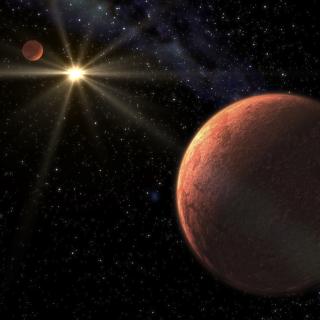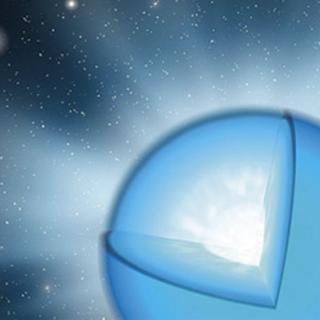Bibcode
Morales, J. C.; Mustill, A. J.; Ribas, I.; Davies, M. B.; Reiners, A.; Bauer, F. F.; Kossakowski, D.; Herrero, E.; Rodríguez, E.; López-González, M. J.; Rodríguez-López, C.; Béjar, V. J. S.; González-Cuesta, L.; Luque, R.; Pallé, E.; Perger, M.; Baroch, D.; Johansen, A.; Klahr, H.; Mordasini, C.; Anglada-Escudé, G.; Caballero, J. A.; Cortés-Contreras, M.; Dreizler, S.; Lafarga, M.; Nagel, E.; Passegger, V. M.; Reffert, S.; Rosich, A.; Schweitzer, A.; Tal-Or, L.; Trifonov, T.; Zechmeister, M.; Quirrenbach, A.; Amado, P. J.; Guenther, E. W.; Hagen, H. -J.; Henning, T.; Jeffers, S. V.; Kaminski, A.; Kürster, M.; Montes, D.; Seifert, W.; Abellán, F. J.; Abril, M.; Aceituno, J.; Aceituno, F. J.; Alonso-Floriano, F. J.; Ammler-von Eiff, M.; Antona, R.; Arroyo-Torres, B.; Azzaro, M.; Barrado, D.; Becerril-Jarque, S.; Benítez, D.; Berdiñas, Z. M.; Bergond, G.; Brinkmöller, M.; del Burgo, C.; Burn, R.; Calvo-Ortega, R.; Cano, J.; Cárdenas, M. C.; Guillén, C. Cardona; Carro, J.; Casal, E.; Casanova, V.; Casasayas-Barris, N.; Chaturvedi, P.; Cifuentes, C.; Claret, A.; Colomé, J.; Czesla, S.; Díez-Alonso, E.; Dorda, R.; Emsenhuber, A.; Fernández, M.; Fernández-Martín, A.; Ferro, I. M.; Fuhrmeister, B.; Galadí-Enríquez, D.; Cava, I. Gallardo; Vargas, M. L. García; Garcia-Piquer, A.; Gesa, L.; González-Álvarez, E.; Hernández, J. I. González; González-Peinado, R.; Guàrdia, J.; Guijarro, A.; de Guindos, E.; Hatzes, A. P.; Hauschildt, P. H.; Hedrosa, R. P.; Hermelo, I.; Arabi, R. Hernández; Otero, F. Hernández; Hintz, D.; Holgado, G.; Huber, A. et al.
Bibliographical reference
Science
Advertised on:
9
2019
Journal
Citations
122
Refereed citations
110
Description
Surveys have shown that super-Earth and Neptune-mass exoplanets are more frequent than gas giants around low-mass stars, as predicted by the core accretion theory of planet formation. We report the discovery of a giant planet around the very-low-mass star GJ 3512, as determined by optical and near-infrared radial-velocity observations. The planet has a minimum mass of 0.46 Jupiter masses, very high for such a small host star, and an eccentric 204-day orbit. Dynamical models show that the high eccentricity is most likely due to planet-planet interactions. We use simulations to demonstrate that the GJ 3512 planetary system challenges generally accepted formation theories, and that it puts constraints on the planet accretion and migration rates. Disk instabilities may be more efficient in forming planets than previously thought.
Related projects

Very Low Mass Stars, Brown Dwarfs and Planets
Our goal is to study the processes that lead to the formation of low mass stars, brown dwarfs and planets and to characterize the physical properties of these objects in various evolutionary stages. Low mass stars and brown dwarfs are likely the most numerous type of objects in our Galaxy but due to their low intrinsic luminosity they are not so
Rafael
Rebolo López

Physical properties and evolution of Massive Stars
This project aims at the searching, observation and analysis of massive stars in nearby galaxies to provide a solid empirical ground to understand their physical properties as a function of those key parameters that gobern their evolution (i.e. mass, spin, metallicity, mass loss, and binary interaction). Massive stars are central objects to
Sergio
Simón Díaz

Physical properties and evolution of Massive Stars
This project aims at the searching, observation and analysis of massive stars in nearby galaxies to provide a solid empirical ground to understand their physical properties as a function of those key parameters that gobern their evolution (i.e. mass, spin, metallicity, mass loss, and binary interaction). Massive stars are central objects to
Sergio
Simón Díaz

Exoplanets and Astrobiology
The search for life in the universe has been driven by recent discoveries of planets around other stars (known as exoplanets), becoming one of the most active fields in modern astrophysics. The growing number of new exoplanets discovered in recent years and the recent advance on the study of their atmospheres are not only providing new valuable
Enric
Pallé Bago